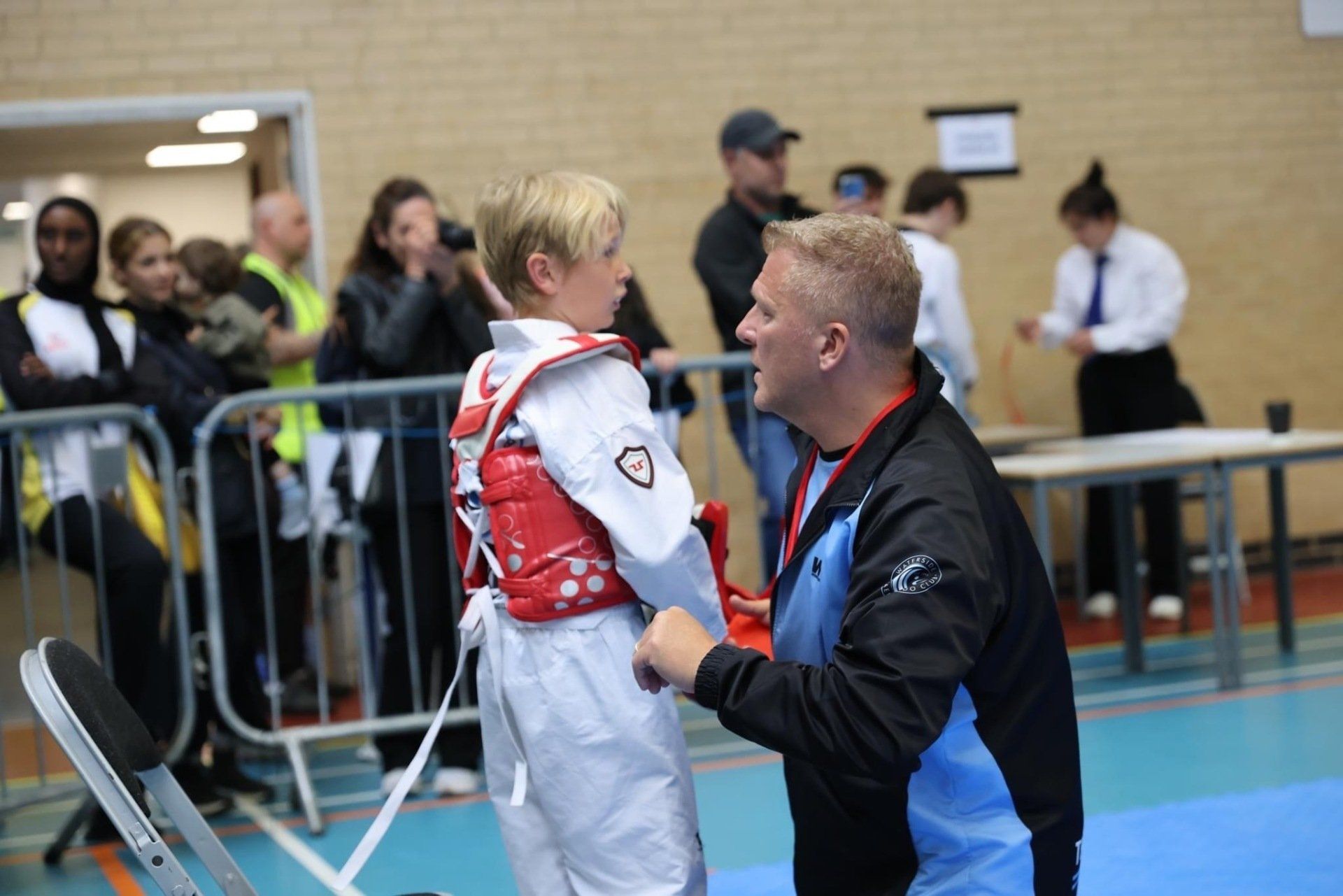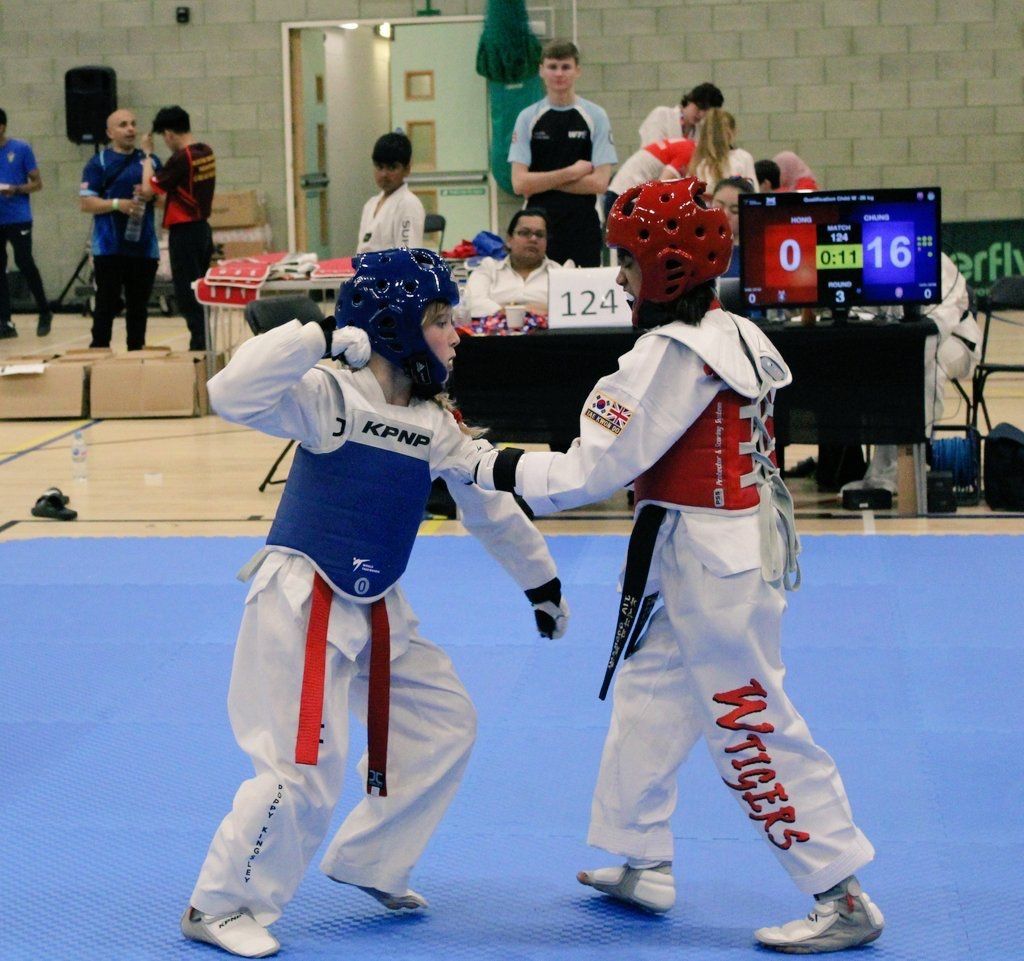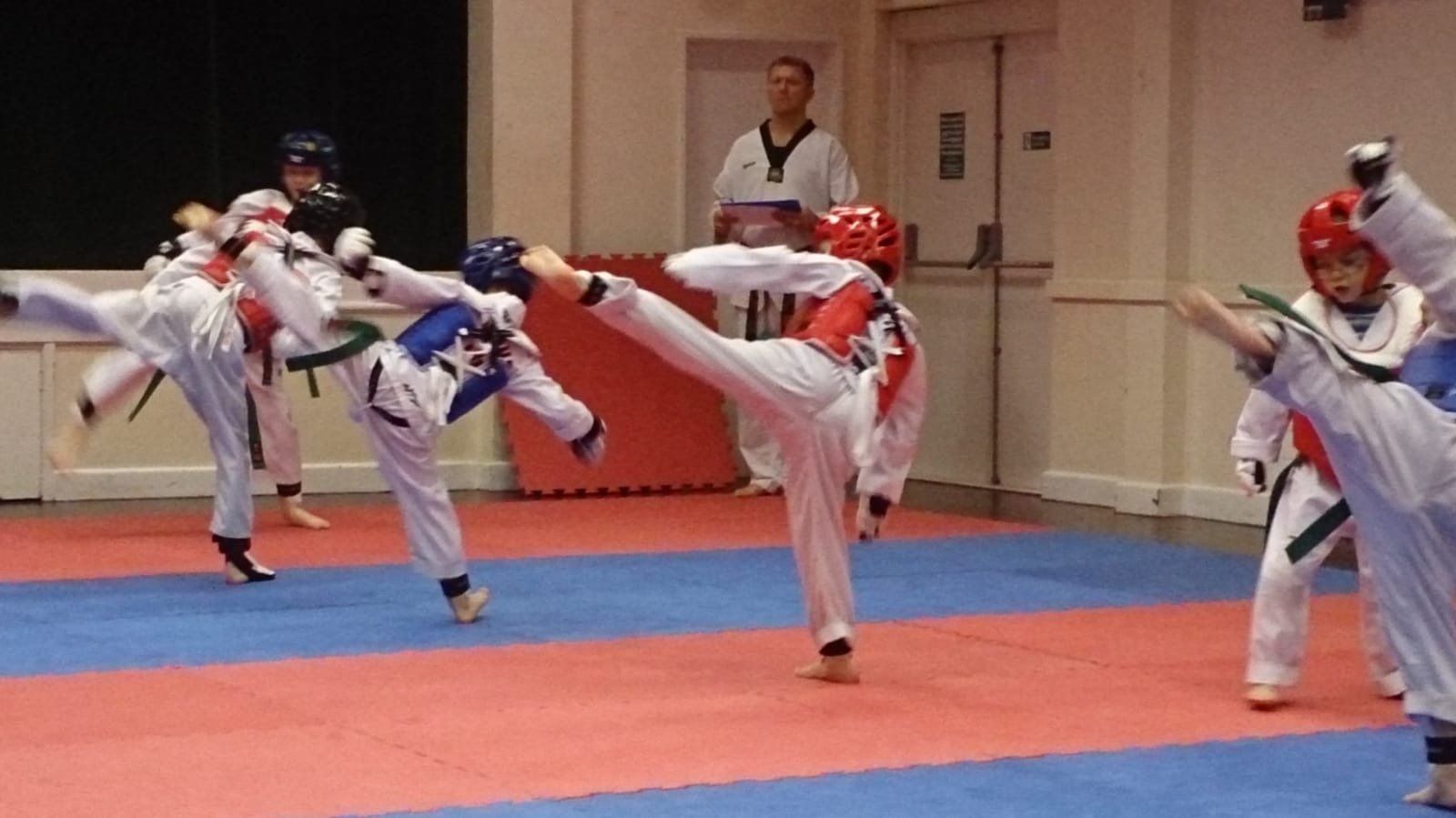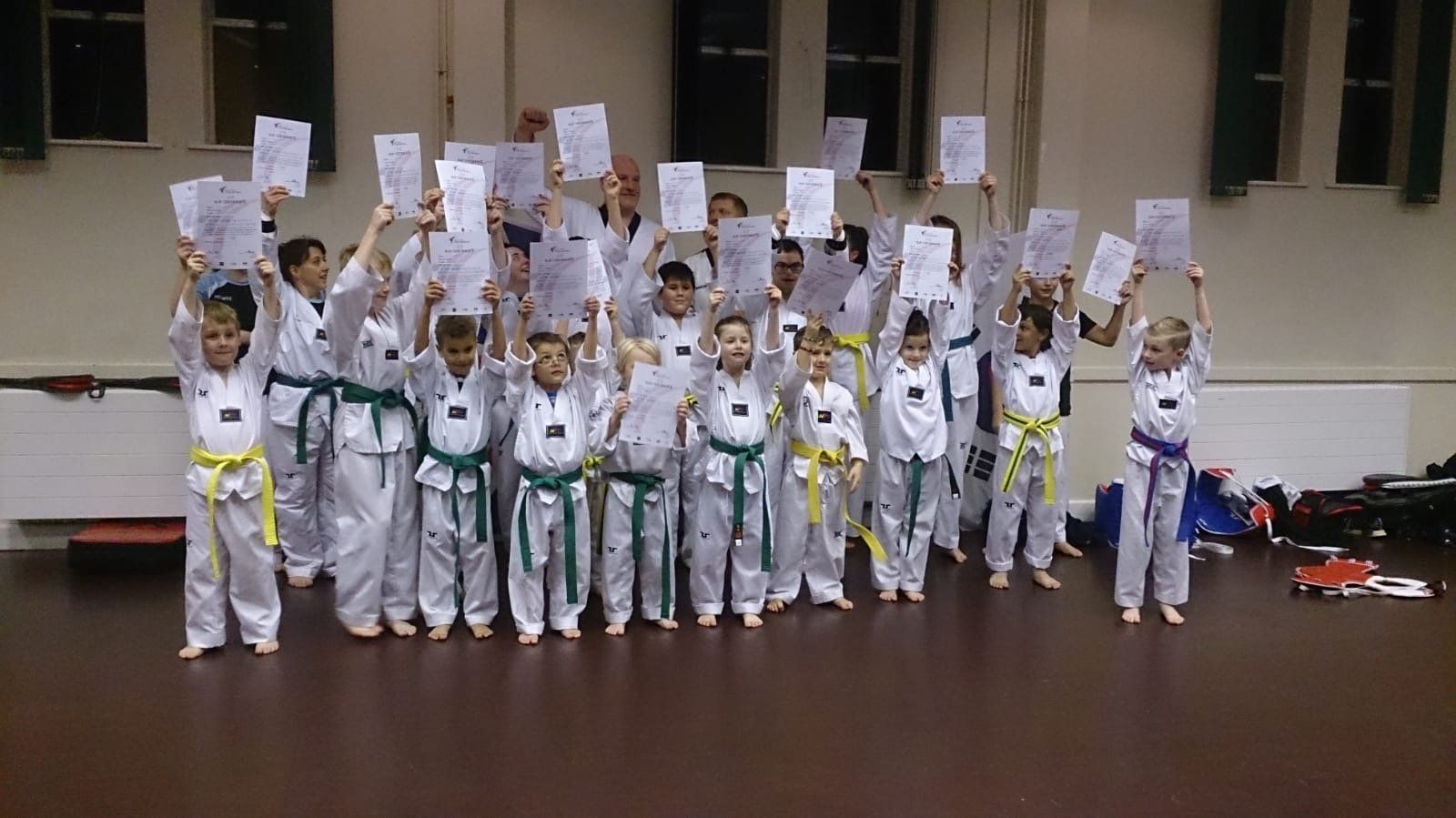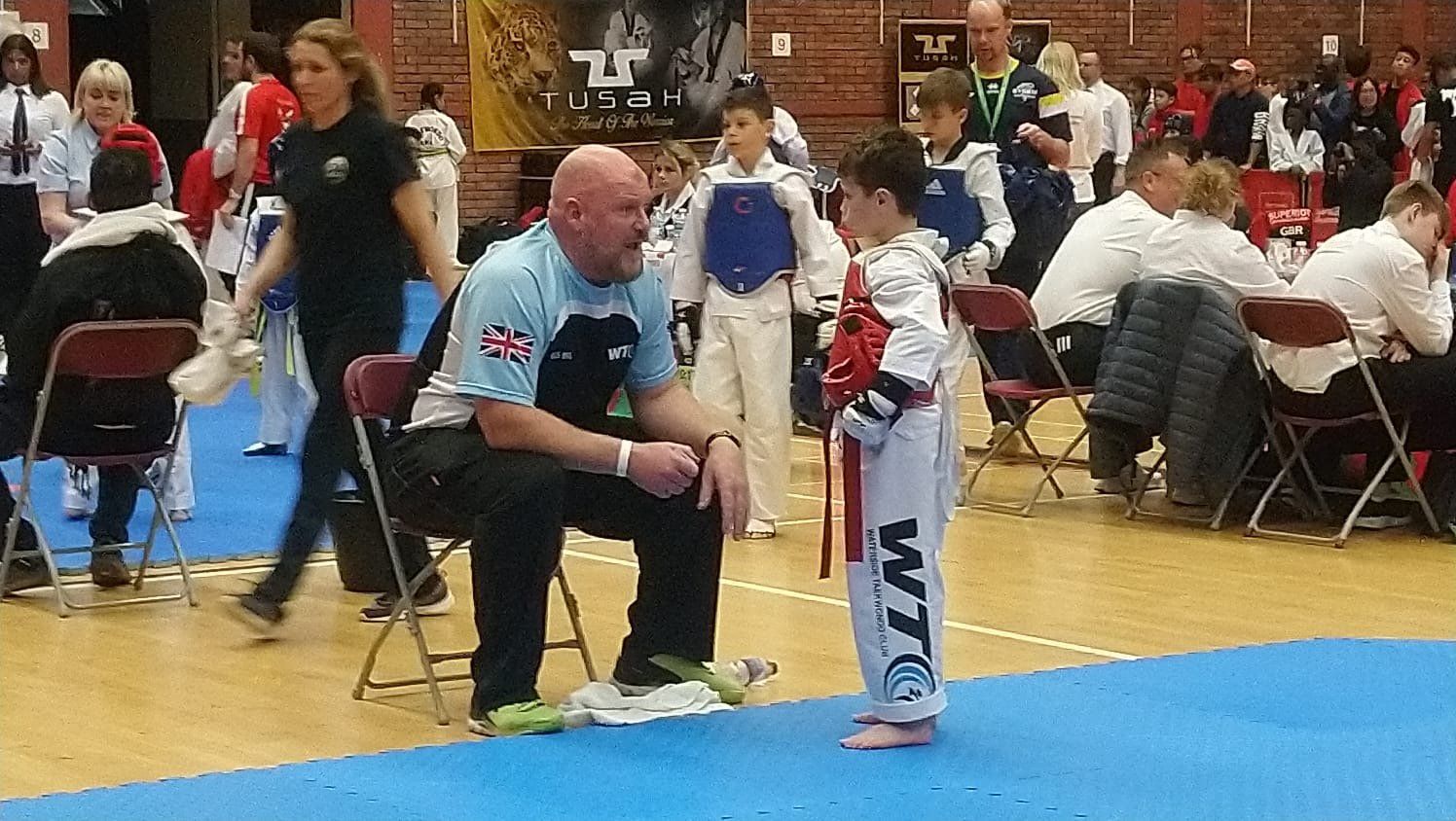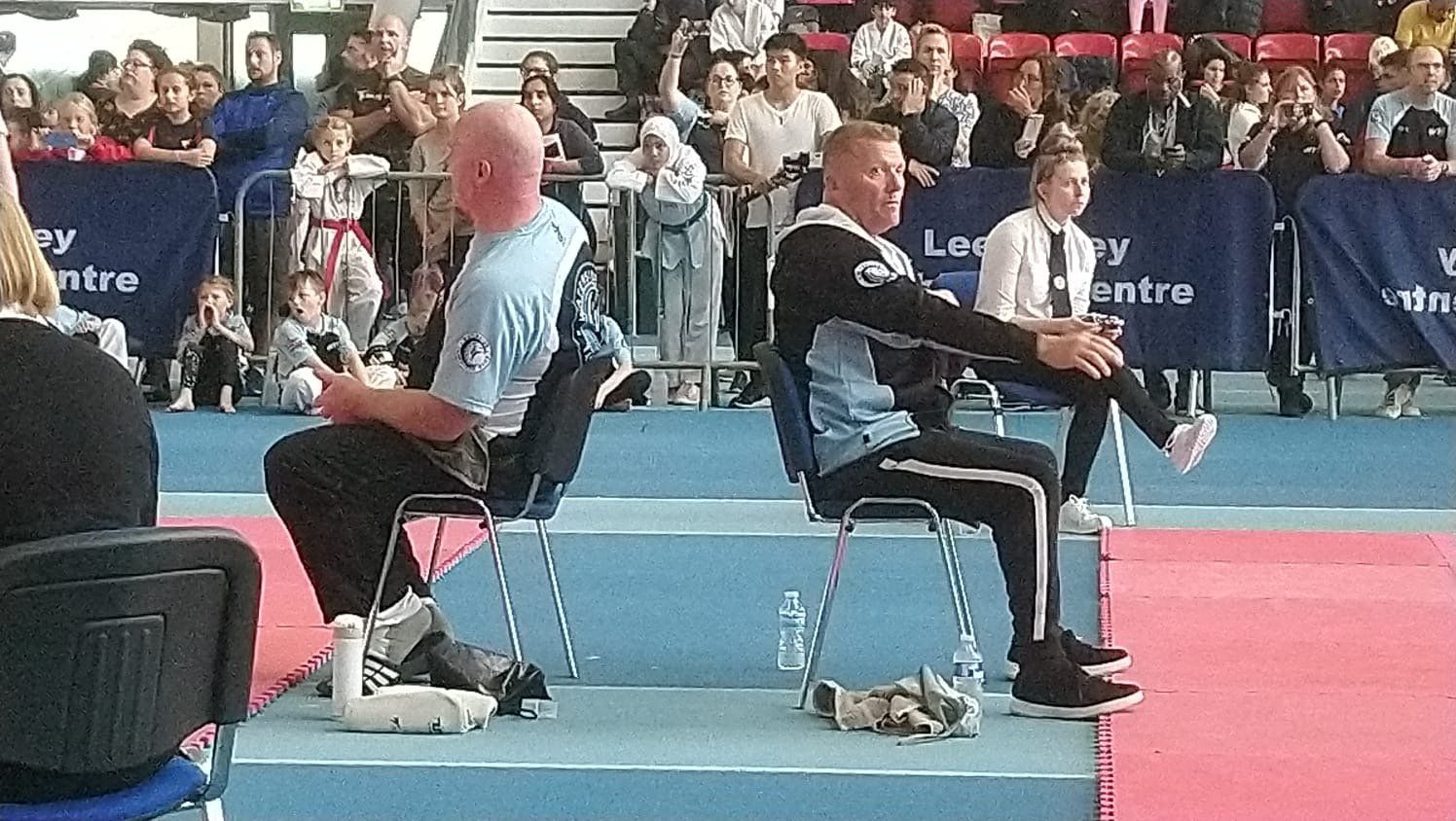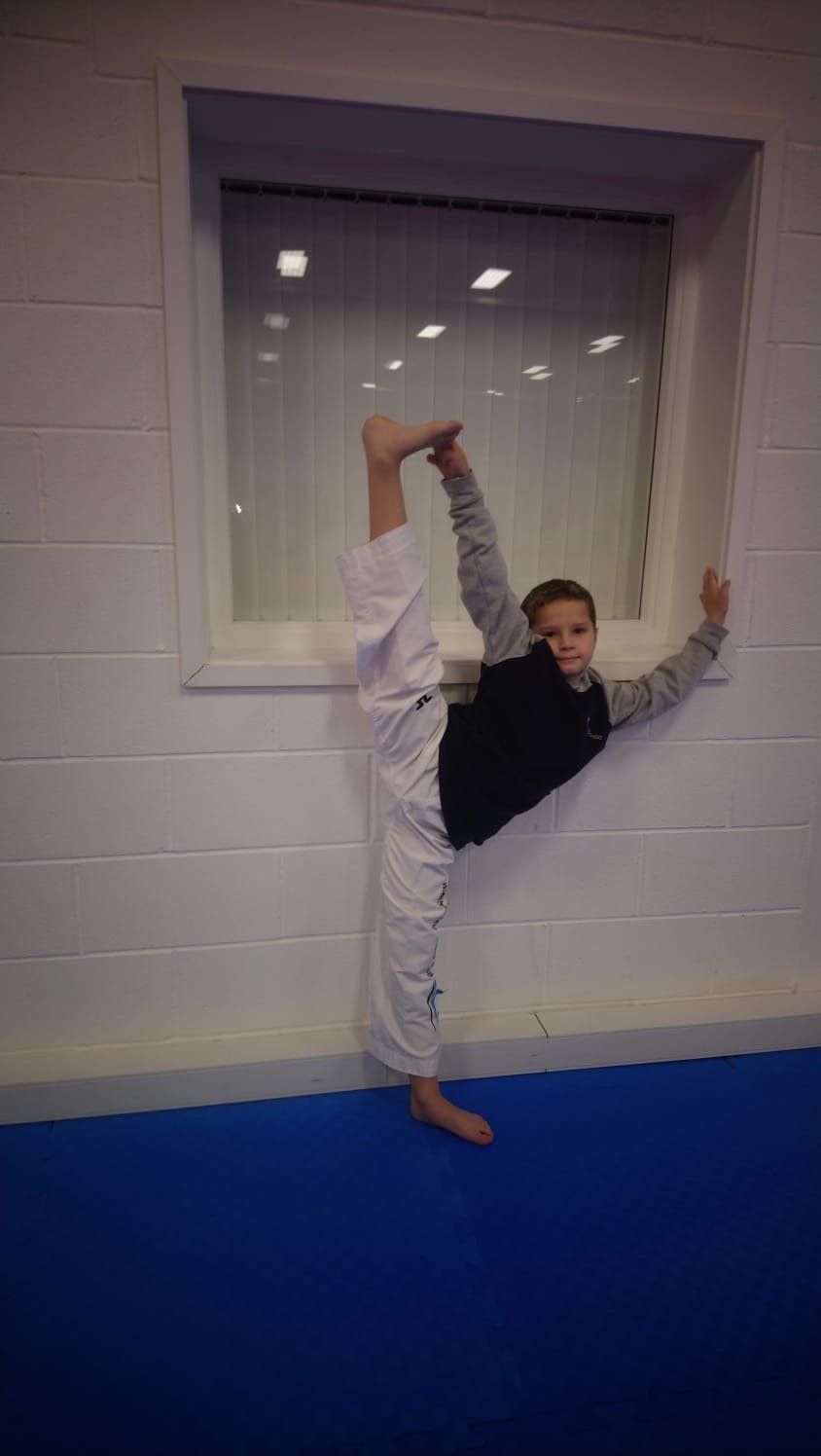Where to find us
All Locations
LIST
MAP
Club Gradings
We have two different types of gradings where you can progress towards a black belt and beyond.
You may prefer either traditional Taekwondo or Sports Sparring.
The traditional grading is more technical where you will learn over the three months a 18 to 25 step pattern plus you will need to learn at least four kicks which are done on the spot. We have recently added a technical block and strike which we require it to be competition standard.
This traditional grading also involves sparring but this this is no contact.
The Sports Sparring grading is done against an opponent and you would need to know your four kicks so you can demonstrate them in the 2 x 2 minute rounds.
These gradings are done with full sparring equipment and that must include a gum shield.
The gradings are most suited for competition training so you can progress up the belts plus also train to take part in either test matches or competition locally or nationally.
Our Club and Competition Poomsaes
These are the official poomsaes that we teach in the classes which were formed in Kukkiwon (Korea). It's important that when viewing off internet or Youtube that you learn the correct ones as many clubs like to teach a different way which can confuse matters.
Poomsae 1
Taegeuk 1 Jang (Il Jang) - Pattern number 1 (18 Steps)
The first learned poomsae, it is the foundation to which all poomsae are built. It is characterised by it's simple lines, easy techniques and basic actions. It represents the symbol 'Keon' - Heaven, the creation...and it's meaning symbolises the beginning.
Poomsae 2
Taegeuk 2 Jang (Ee Jang) - Pattern number 2 (18 Steps)
It represents the symbol 'Tae' meaning lake - or, inner firmness and the outer softness. To be performed accurately, it requires the student to clear their mind to be as still as a lake. There are more front kicks in this pattern, and it is important to show the distinction between walking stances and forward stances, middle section and upper section punches.
Poomsae 3
Taegeuk 3 Jang (Sam Jang) - Pattern number 3 (20 Steps)
Representing the symbol 'Ree' meaning 'hot and bright' or 'Fire'. The student should embody the energy of the fire when practising this poomsae. This poomsae is the first to use 3 techniques together - and this is where the student can demonstrate their energy. Also, the student will be expected to demonstrate the changes of stance, between a back stance and forward stance accurately.
Poomsae 4
Taegeuk 4 Jang ( Sa Jang) - Pattern number 4 (20 Steps)
Represents the symbol 'Jin' meaning thunder, meaning great power. This is to prepare you for accomplishing techniques in sparring.
Poomsae 5
Taegeuk 5 Jang (O Jang) -
Pattern
number 5 (20 Steps)
Symbolised by 'So-en' meaning wind, meaning great power but also softness according to differing strengths. Many of these techniques can only be used on an opponent at a close distance.
Poomsae 6
Poomsae 6
Taegeuk 6 Jang (Luk Jang) -
Pattern number 6 (19 Steps)
Symbolised by 'Gam' meaning water, the flow of water is never ending - but incessant flow can carve great mountains and be steady and powerful. Harness the flowing power of water when performing this poomse.
Poomsae 7
Taegeuk 7 Jang (Chil Jang) - Pattern number 7 (25 steps)
Symbolised by 'Gun' meaning mountain, creating the illusion of firmness and stability. The techniques should be performed with a confidence and stable approach. Using your balance to move from challenging techniques with speed and accuracy.
Poomsae 8
Taegeuk 8 Jang (Pal Jang) - Pattern number 8 (27 Steps)
Symbolised by 'Kon' meaning Earth - the beginning and the end, the foundation. There are basic techniques as well as more advanced techniques reminding us of the circle of learning, and where we have come from. The more advanced techniques introduced in this pattern also start off a foundation for some of the techniques which will be used in dan poomse.




